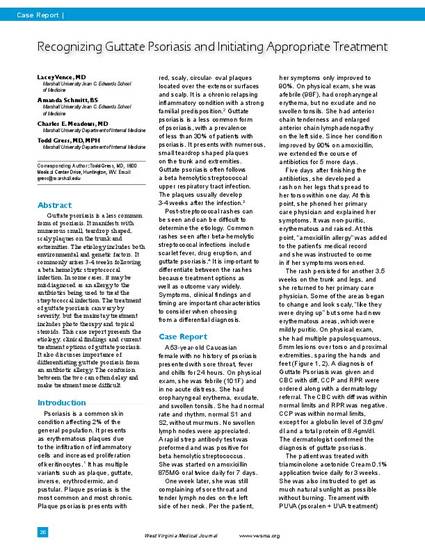
Guttate psoriasis is a less common form of psoriasis. It manifests with numerous small, teardrop shaped, scaly plaques on the trunk and extremities. The etiology includes both environmental and genetic factors. It commonly arises 3-4 weeks following a beta hemolytic streptococcal infection. In some cases, it may be misdiagnosed as an allergy to the antibiotics being used to treat the streptococcal infection. The treatment of guttate psoriasis can vary by severity, but the mainstay treatment includes photo therapy and topical steroids. This case report presents the etiology, clinical findings and current treatment options of guttate psoriasis. It also discusses importance of differentiating guttate psoriasis from an antibiotic allergy. The confusion between the two can often delay and make treatment more difficult.

The copy of record may be accessed at http://www.wvsma.org/Journal/PastEditionsoftheJournal.aspx. Copyright © 2015 West Virginia State Medical Association. Reprinted with permission. All rights reserved.